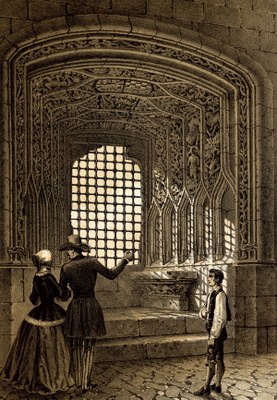Workshop // Maria Teresa Chicote: Arboreal Spaces - Naturalising Architecture at the Eve of the Early Modern Period
Termindetails
Wann
von 12:00 bis 13:00
Wo
Viewing and feeling are interwoven activities. When everyday people are faced with colossal construction works, they stop by and reflect on what is happening. They ask what is being built, how something is constructed and who is behind such grand creations. Something similar happened in previous centuries, when citizens of all types witnessed the construction of the magnificent structures with which monarchs, aristocrats and clergymen organised their individual worlds. Depending on their specific needs and on the artistic landscapes in which they operated, patrons and artists developed architectural strategies and designs that were meant to impress their audiences and outlast their finite lives. Of particular interest due to their peculiar aspect are a series of buildings erected between the late-fifteenth and early-sixteenth centuries; constructions that have been defined as Astwerk because their architectural elements resemble petrified branch structures. Research devoted to arboreal architecture usually studies the great religious examples found in Germany, such as the south portal of Ulm Minster, the cathedral of Eichstät or the chapels of Ingolstadt. Many readings of the so-called Astwerk have been proposed, but no consent has been reached yet. Some scholars have given theological interpretations to this kind of structures, while others have considered them an aesthetic reaction to the classical models put forward by the Italian Renaissance. Starting off from the study of a new set of arboreal spaces (from France, Spain, Portugal and Italy), this project aims to offer an alternative reading to some of these arboreal architectures according to which they were used with the intention of creating eloquent spaces that broke the barriers between ephemeral and permanent art. At the same time, this project will also focus on the symbolism of the tree itself, as in the medieval and early modern periods trees were commonly understood as the symbolic representations of the interconnection of concepts, people and times.
Research devoted to arboreal architecture usually studies the great religious examples found in Germany, such as the south portal of Ulm Minster, the cathedral of Eichstät or the chapels of Ingolstadt. Many readings of the so-called Astwerk have been proposed, but no consent has been reached yet. Some scholars have given theological interpretations to this kind of structures, while others have considered them an aesthetic reaction to the classical models put forward by the Italian Renaissance. Starting off from the study of a new set of arboreal spaces (from France, Spain, Portugal and Italy), this project aims to offer an alternative reading to some of these arboreal architectures according to which they were used with the intention of creating eloquent spaces that broke the barriers between ephemeral and permanent art. At the same time, this project will also focus on the symbolism of the tree itself, as in the medieval and early modern periods trees were commonly understood as the symbolic representations of the interconnection of concepts, people and times.
This project wants to investigate this duality in the reading of arboreal architectures and show that this double interpretation made arboreal spaces particularly compelling as they petrified ephemeral structures and, at the same time, addressed the beholder through a visual idiom that surprised by evoking memories.
[Caption: F. J. Parcerisa, Window of the gothic castle of Belmonte (Cuenca, Spain), in J. M. Quadrado, Recuerdos y bellezas de España. Castilla la Nueva, vol. II (Madrid: José Repullés, 1853)]
